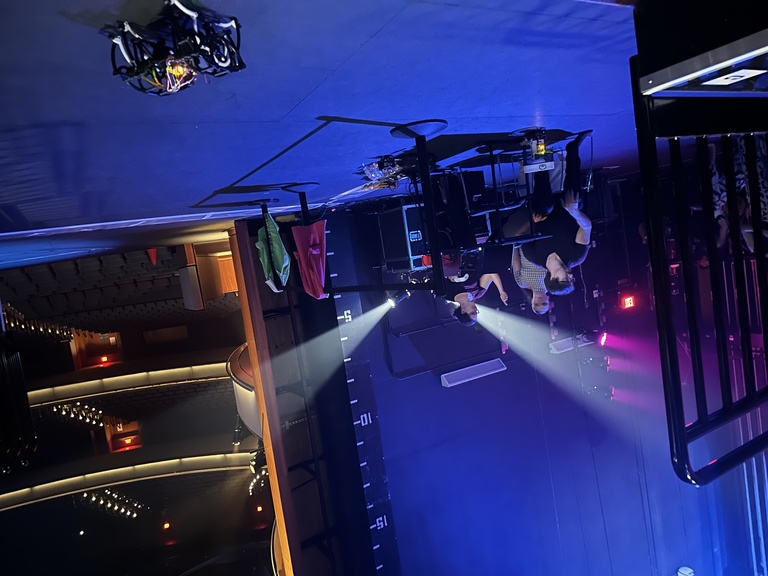An idea to explore connections of humans and technology through dance sparked a creative collaboration between the University of Iowa College of Engineering and the Department of Dance.

The partnership culminated in an interpretive performance involving dancers and robots – “Since we have come this far how do we get back?” – at Dance Gala 2024: Agile at Hancher Auditorium.
Stephanie Miracle, UI assistant professor of dance and an international choreographer, choreographed the dance-robotics piece.
“The project explores what an aesthetic dialogue between dancers and robots can reveal to us about how bodies – human and nonhuman – feel, think, and connect with the world through movement,” Miracle said.
The whimsical exercise presented interesting challenges for both dance and engineering.

In May 2024, Miracle connected with Deema Totah, UI assistant professor of mechanical engineering who directs the Robotics and Assistive Devices (RAD) Lab to propose the idea.
Over the summer, Iowa City West High senior, Jinann AbuDagga, worked in the RAD Lab building small robots that could be programmed to move or controlled by a remote.
One robot resembled a snake slithering across the floor. Tassels would flare when a bow tie wearing robot spun. A trio of colorful furry objects would vibrate as if excited as they moved. Another robot had tentacles with eye-like orbs that would blink to convey emotion.
As fall semester began, Totah and Miracle would observe rehearsals. Ten student dancers performed with the robots over four acts. Based on what the professors saw, they would modify the choreography and appearance of the robots to enhance the unspoken dialogue between robots and dancers. Increasingly, the robot designs began to take on more lifelike characteristics.
Maddie Bulman, an undergraduate dance major from Cedar Rapids, and Olivia Farmerie, a Master of Fine Arts candidate, performed in the act involving the snake-like robot.
“Even though they are robots, each has its own personality,” Bulman said. “Part of the process is learning the personality and integrating it with how we interact with the robot and our colleagues in the act and the rest of the piece. The engineers also used our interactions with the robots to build and code them, which adds to the meanings of our interactions.”
From an engineering perspective there is much to be learned, Totah said.
“It gave me a new perspective,” Totah said. “How robotic devices are designed can evoke different emotions in humans. We can apply that in dance or, for example, in designing medical devices to encourage greater use rates.”
Totah and Miracle said they are interested to see where the unexpected partnership can lead. They are planning to co-author a paper about this interdisciplinary collaboration and its impact.
Also involved in the project were mechanical engineering students from the RAD Lab; Casey Harwood, mechanical engineering associate professor; Kevin Swenson, a PhD candidate in music composition, and the Performing Arts Production Unit.
